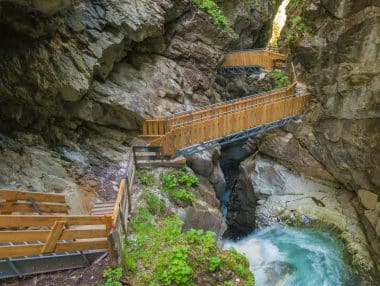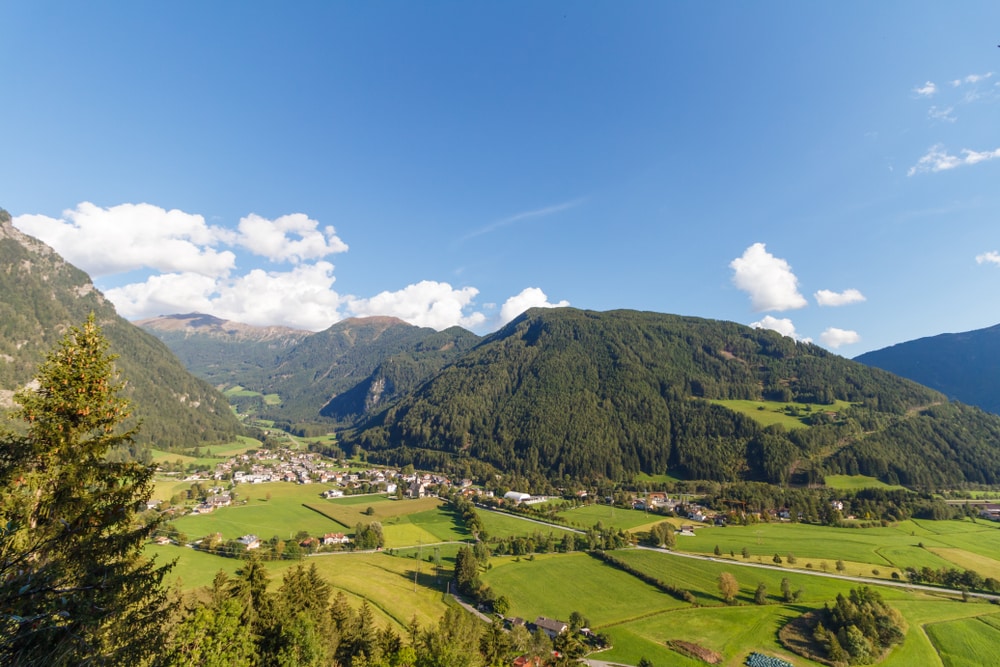South Tyrol has been delighting German and international travellers for decades. In particular, the fascinating variety of landscapes attracts those seeking relaxation and active holidaymakers every year. The spectacular mountains, rushing waterfalls, lush green alpine pastures, barren high plateaus, nature parks with species-rich flora and fauna as well as crystal-clear lakes are unique natural attractions. In the following article, we present the charming South Tyrolean town of Vipiteno.
Facts
Vipiteno is both an Italian city and a municipality. As of 2019, 7,044 inhabitants were recorded. It is located in the Wipp Valley, which runs in a north-south direction. The valley is partly located in the Austrian North Tyrol, partly in the Italian South Tyrol. For centuries, Vipiteno has been an important trading town, which it owes to its favourable location between the Pennes Pass and the Jaufen and Brenner Passes. Today, the town is primarily considered the tourism and economic centre of the Wipptal district community.
South Tyrolean accommodation: warm hospitality is guaranteed
In the South Tyrolean town of Vipiteno, there is a large selection of accommodation of all kinds. These include Stafler’s Gut, the Romantik Hotel in Vipiteno with over 700 years of history. Once a post office, the hostel has been known as a hospitable, cosmopolitan place for about 270 years. Its advantages include:
- comfortable and cosy rooms and suites
- Large, well-kept park
- Restaurants with four toques and two stars
- Spacious wellness area
The Romantik Hotel in Vipiteno is the ideal accommodation to enjoy pampering after extensive discovery tours in South Tyrol.
5 interesting sights in Vipiteno
South Tyrol is a holiday region that has something for almost every taste . Whether travelers want to do water sports, hiking, climbing, mountaineering, biking or sightseeing, everything is possible. The following 5 attractions are among the most popular sightseeing destinations in Vipiteno.
Tip 1: Parish Church of Our Lady in the Moos
The Vipiteno parish church, which is well worth seeing, is a late Gothic building. It was built in two stages: the choir from 1417 to 1451, the nave from 1497 to 1524. Among other things, the five Multscher figures on the main altar and the Roman tombstone Postumia Vitorina are impressive. The parish church of Our Lady in the Moos can be visited daily from 9 a.m. to 7:00 p.m.
Tip No. 2: Zwölferturm

The 46-metre-high Zwölferturm is a landmark of the city of Sterzing. According to tradition, the name is based on its 12 o’clock chime, which called the inhabitants to lunch at that time. It was built between 1468 and 1472. The tower is made of granite ashlars and has a passage arch and pointed arch windows. On the first floor there is a prison cell.
Tip No. 3: Holy Spirit Hospital Church
In the centre of Vipiteno on the town square is the Holy Spirit Hospital Church . It is one of the most interesting sacred buildings in the Eisack Valley. The exterior is rather inconspicuous and simple. However, its interior holds a fantastic surprise: artistically designed frescoes that bear witness to the outstanding work of the Pustertal School of Painting. The hospital church was built between 1399 and 1402. At the same time, a wing of the building was built that once served as a hospital and hospice for pilgrims on their way to Italy .
Tip No. 4: Jöchlsthurn Residence
It is located in the west of the new town of Sterzing. Just like the parish church of Our Lady in the Moos, the Jöchlsthurn residence was built in several phases. In its 700-year building history, renovations have taken place again and again. Its typical Gothic and Baroque elements are just as impressive as the colourful wall frescoes from the 15. and 16th century and the three late Gothic wooden ceilings.
Tip No. 5: Vipiteno Town Hall
Another outstanding sight of Vipiteno is the town hall. The highlight of the impressive late Gothic building from the 15th century is the magnificent bay window. The Rathausstube, which is one of the best preserved in all of Tyrol, is also fascinating. Furthermore, visitors marvel at a Roman altar stone from the year 200 AD, which is dedicated to the Persian god Mithras.
The top 3 Attractions around Vipiteno
Above all, the South Tyrolean nature offers the most popular and attractive excursion destinations. Families with children have just as many activities at their disposal as all other holidaymakers of all ages. Below you will find a small selection of great excursion locations that are easily accessible from Vipiteno.
Rossy Park
The Rossy Park children’s playground and petting zoo is located near the Rosskopf mountain station. Animal lovers of all ages will be delighted by the llamas, alpacas, donkeys, dwarf ponies, goats and rabbits. To park your vehicle, we recommend the large car park at the Rosskopf valley station in Sterzing.
Mühlendorf Gschnitz

All holidaymakers interested in history are recommended to visit the mill village in Gschnitz. The old-fashioned ambience takes visitors back in time. Ancient, well-trodden paths lead along the Sandes waterfall to numerous buildings of the “living” mill village. There, excursionists can get to know the way the locals worked 100 years ago. Among the crowd-pullers are the craft workshop, blacksmith’s shop and the flour mill powered by water power.
Gilfenklamm
Only 5.5 kilometres separate Vipiteno from Stange near Racines. From there, a hiking trail leads along the Jaufenbach to an outstanding gorge: the Gilfenklamm. Over a length of 2.5 kilometres, numerous stairs and suspension bridges lead through the middle of the unique natural sight. It is also known as the Marble Gorge and is unique in Europe. From time immemorial to the present day, the precious rock has been mined there. Hikers enjoy the view of thundering masses of water and bright white marble, which reflects the greenery of the surroundings.


